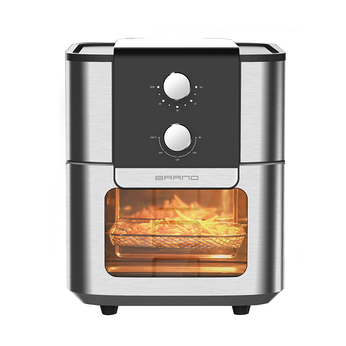The Smokeless Indoor Electric Grill is equipped with advanced, high-performance heating elements that are strategically placed across the cooking surface. These elements are engineered to distribute heat uniformly, minimizing the risk of hot spots or temperature fluctuations. Many of these heating elements are made from materials with excellent thermal conductivity, such as copper or high-grade aluminum, which allow the heat to spread evenly across the entire grill surface. This ensures that no matter where food is placed, it is cooked consistently. These elements are often designed to maintain heat retention over longer periods, reducing the need for constant temperature adjustments during the grilling process.
To enhance cooking precision, most Smokeless Indoor Electric Grills feature highly sensitive thermostats and integrated temperature sensors. These components work together to continuously monitor the grill’s temperature and adjust the heat output automatically, ensuring that the grill maintains the desired cooking temperature throughout the grilling process. When large quantities of food are added, or if the grill surface cools due to external factors (such as ambient temperature or the introduction of cold food), the sensors detect this change and trigger the heating elements to increase power, quickly returning the surface to the ideal cooking temperature.
The grill's construction plays a significant role in temperature stability. Many Smokeless Indoor Electric Grills are made with materials such as cast iron or high-density aluminum, both of which are known for their excellent heat retention properties. These materials retain heat for a long time, which is essential when grilling large portions of food. Cast iron, for example, stores heat and then distributes it evenly across the grill’s surface, maintaining a consistent cooking temperature even when cold food is placed on the grill. This high heat retention reduces the chances of temperature drops when large volumes of food are added, allowing the grill to keep cooking efficiently without prolonged temperature recovery periods.
An even cooking surface is crucial for consistent temperature maintenance. Many Smokeless Indoor Electric Grills are designed with a ribbed or flat cooking surface that facilitates uniform heat distribution. The grill plates are often coated with non-stick materials or ceramic coatings, which help heat to spread more evenly. The design of these cooking surfaces ensures that the heat generated by the grill elements is distributed throughout the entire surface, eliminating the risk of uneven cooking. When larger portions are added, this even heat distribution helps to maintain the same level of cooking efficiency, ensuring that every piece of food is exposed to the correct amount of heat, regardless of placement on the grill.
When a large amount of food is added to the Smokeless Indoor Electric Grill, the overall temperature of the cooking surface may briefly dip. To address this, many grills are designed with rapid heat recovery mechanisms. These systems allow the grill to quickly adjust and restore the cooking temperature to the desired level. The efficient heating elements and integrated thermostatic control ensure that, even after a significant drop in temperature, the grill can recover and stabilize the heat without compromising the cooking process. This rapid heat recovery is particularly beneficial for high-volume cooking, where temperature fluctuations are more likely to occur.
Many Smokeless Indoor Electric Grills come equipped with adjustable heat settings, which allow users to control the intensity of the heat based on the food being prepared. These settings provide flexibility for grilling different types of food, such as steaks, vegetables, or delicate fish. When cooking large portions or adding new food to the grill, the ability to adjust the heat ensures that the grill continues to perform optimally. Higher heat settings can be used for searing meats, while lower heat settings are perfect for foods that require gentler cooking.


 English
English 中文简体
中文简体 English
English 中文简体
中文简体












